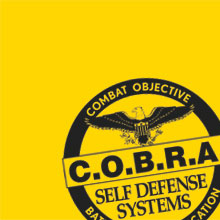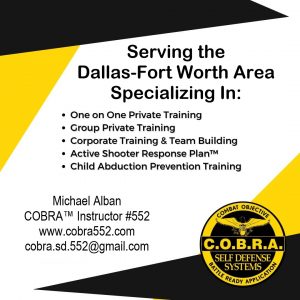
Most people think of physical self-defense techniques like how to defend against a punch, choke, somebody pointing a gun or knife at you. The reality is that these physical techniques only come into play as a last resort when all other preventative measures have failed.
There real chance that your physical self-defense techniques may fail
The reality is that no matter how well you are trained or in what system you are trained in, there is still a very good chance that your techniques may not have any effect on your attacker.The attacker always controls the TIME, Place and method of the attack which means the attacker always have the initial advantage over the victim. Also, the victim may be injured or just plain physically weaker than the attacker. The victim may be outnumbered. There are any reasons why physical techniques may not work as intended.
Am I saying that you should not bother to train in physical techniques? Not at all. What I am saying is that you have to realize that physical techniques are not the be all and end all of self-protection. Real self-defense is about avoidance more than about fighting but if you have to fight, you have to have the physical skillset to stop the threat.
Having layers of protection is essential for real self defense
Foe real self-defense, you have to have various layers of protection, not only physical tactics. The first layer is your ability to spot trouble before it comes your way. You have to learn the skills required to recognize pre-attack indicators. Another layer is the ability to take the correct decisions how to deal with the situation whether is complying, using conflict de-escalation tactics, fleeing or fighting. Making the incorrect decision will have dire consequences. Making the correct decision could mean the difference between going home or enjoying an extended stay at your local hospital.
Soft skills may be the difference between life and death
The so called “soft skills” like being able to recognize preattack indicators, knowing how to evade or de-escalate situation is actually the most important skills you should master when learning how to protect yourself and your loved ones. Here is list of the minimum soft skills you should master:
- Knowing the various types of attackers, what motivates each and their common modus operandi.
- Th difference between social violence and criminal violence.
- How attackers select their victims and practical steps you can take to become a less attractive target.
- How to recognize preattack indicators and respond to that.
- Conflict avoidance and evasion skills.
- Verbal Conflict De-Escalation Skills.
- Knowing when it is desirable not to engage in physical combat and when you absolutely have to.
- Understanding what your rights are in terms of the law as it pertains to self-defense.
- Measures to secure your workplace and home against a violent attack.
Most people who learn these soft skills first, realize that if correctly applied, they would hardly ever have to resort to physical tactics. They come to understand that the physical tactics really only come into play if all the other options available to them have failed.

